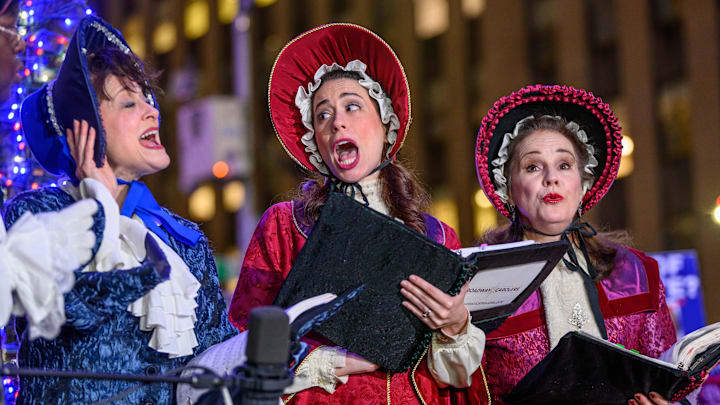It’s something that is now such a commonplace and integral part of the holiday season that you’ve likely never thought to question it. But why do we sing festive carols at Christmastime?
The simple answer is that the singing of Christmas carols—many of which have lyrics celebrating the birth of Jesus—is simply another way of sharing and expressing both the joy of the yuletide season, and the true meaning of Christmas. But much like a lot of our other festive traditions, the origins of singing carols at Christmastime could be said to have their roots in Ancient Rome.
The Origins of Singing Christmas Carols
The Roman Saturnalia was a week-long wintertime festival honoring the Roman agriculture god Saturn that began each year on December 17 and marked the annual winter solstice. People ceased working, businesses ceased trading, some legal and social restrictions were eased, and even slaves were given a certain level of freedom during the Saturnalia festivities—which also saw the Romans light candles, give one another gifts, decorate their homes with evergreen branches and wreaths, and sing celebratory songs.

And after the birth of Jesus and the arrival of Christianity in Roman (and later, medieval) Europe, many of these established traditions were simply incorporated into the new festival of Christmas, including the singing of celebratory songs.
In truth, however, many of these early Christian “carols” were really more like formal hymns, with strictly defined musical forms and fairly austere and liturgical lyrics that, just like the Christian mass itself at the time, were written and sung in Latin.
More Like This:
It wasn’t until the later medieval period, under the influence of more progressive Christian figures like St. Francis of Assisi, that more celebratory carols or “canticles” began to emerge that were intended to be sung more socially, outside of church, and with lyrics written in the local regional languages of Europe, instead of Latin.
Oddly, at this time, celebratory songs referred to as carols (literally, “songs for dancing”) were being written and performed throughout the year, and as a result, religious carols were just as popular at Easter as they were at Christmastime. But the sentiment of most of those sung at Christmas songs remained the same as it always had been: to celebrate the birth of Jesus Christ, which through the influence of the Roman Saturnalia, had likewise come to be celebrated towards the end of December.
During the European Reformation of the 16th century, however, Christmas carols all but disappeared—while things got even worse over in England, where Christmas itself went on to be banned under Oliver Cromwell’s puritanical regime in 1645. By the following century, however, times had changed, and in the aftermath of this dryly puritan era, a new wave of more joyous Christmas carols began to appear that both embraced more general festive themes and more varied musical forms. The modern Christmas carol had arrived.

The likes of “Joy to the World,” “Hark! The Herald Angels Sing,” “God Rest Ye Merry, Gentlemen,” and even “The Twelve Days of Christmas” all emerged in the 18th century, while a revived interest in hymn-singing in the Victorian era saw many 19th-century carols—such as “O Holy Night,” “The First Noel,” and “Once in Royal David’s City”—returned the form to its roots, and embrace medieval-style melodies and musical traditions.
Many of these songs remain among the most popular Christmas carols today, while carols themselves have remained an important part of the annual Christmas festivities ever since.
